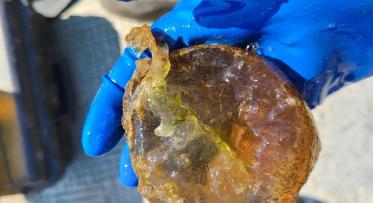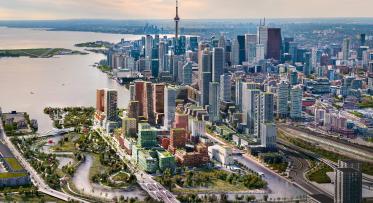Bringing Back the Don - 30 Years of Citizen Advocacy
Ken Dion, Project Director for Port Lands Integration, looks back on 30 years of advocacy to restore the Don River.
POSTED: NOVEMBER 23, 2021 | PARKS AND PUBLIC SPACES, INNOVATION, SUSTAINABILITY, INFRASTRUCTURE
BY: KEN DION
This year we celebrate the 30th anniversary of a report called Bringing Back the Don. The 1991 report was released by a Council-appointed citizen advisory committee, the Task Force to Bring Back the Don. It argued that it was time to recreate a natural mouth for the Don River, lost over 70 years ago when the Port Lands were created by filling in Ashbridges Bay Marsh.
Thirty years later, we’re excavating the renaturalized mouth for the Don River, creating the new river valley and getting ready to start planting vegetation.
Let’s take a look at how we got here.
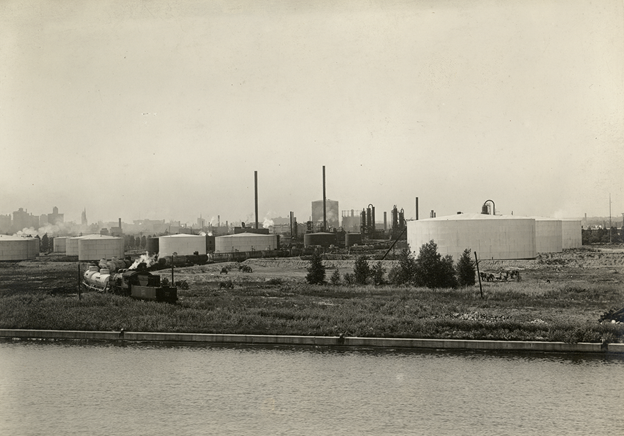
Industrial uses have left a legacy of contamination in the Port Lands. Seen here, oil storage tanks in the 1920s.
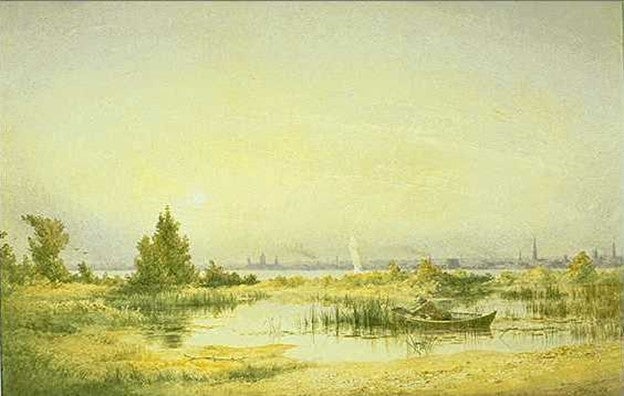
Ashbridges Marsh shown in this 1873 painting by Lucius O’Brien
History of the Don River
Two hundred years ago, the Don River met Lake Ontario in Ashbridges Bay Marsh, one of the largest freshwater marshes on Lake Ontario and home to many different species of wildlife. As what would become the city of Toronto grew, many of the tributaries of the Don were buried and put into pipes. Forests were logged and pollution and sewage was increasingly directed into the Lower Don River, which then made its way into the marsh. Mills built along the riverbank created physical barriers to fish migration and overfishing led in the extinction of native salmon populations.
By the end of the 19th century, the lush aquatic ecosystem of the marsh at the mouth of the Don River had deteriorated completely.
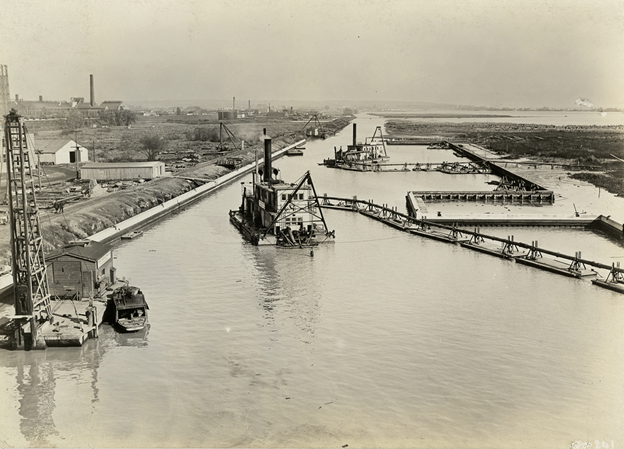
Looking east during construction of the Keating Channel in 1914.
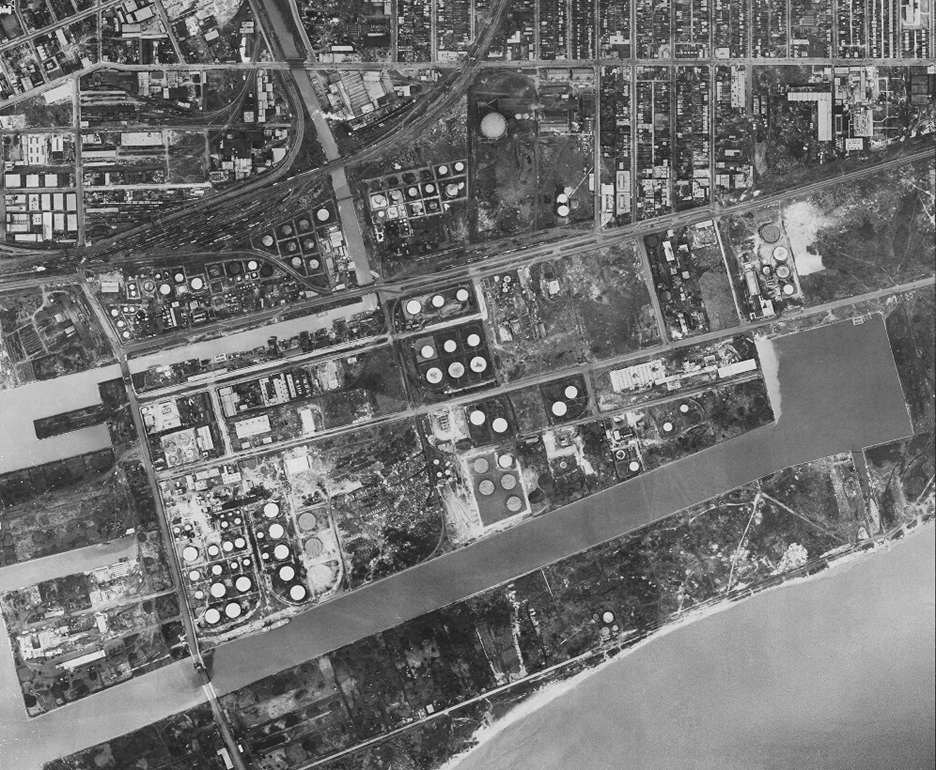
A photo from 1947 showing the oil tanks in the Port Lands.
The Port Lands’ Industrial Past
By the early 1900s, the Toronto Harbour Commission had filled in the marshland at the mouth of the Don River to create an industrial district, establishing today’s Port Lands and Cherry Beach. Between 1910 and 1970, a variety of heavy industrial uses, including extensive oil refining, manufacturing, and energy generation, played a toll on the soil and groundwater quality in the Port Lands.
By the 1970s, much of the heavy industry in the area had transformed to civic and city-serving uses such as salt storage or light industrial uses like concrete production, waste transfer and recycling activities. However, the heavy industrial history of the Port Lands had left a legacy of contamination. What remains is mostly flood-vulnerable lands with little ecological function. Wildlife along the shoreline and in the Inner Harbour was equally limited.
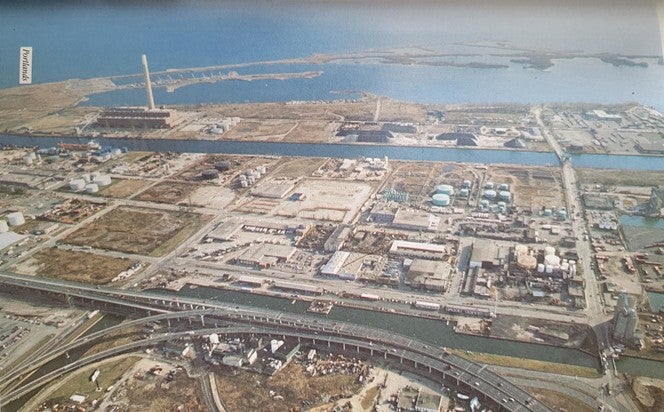
Looking south at the Port Lands in the 1980s.
Cleaning up the Don River
On April 1, 1989, over 500 people attend a public meeting with the City of Toronto and Toronto and Region Conservation Authority (TRCA) along with other government agencies to discuss ways to clean up the Don Watershed. This launched the City’s Interim Task Force to Bring Back the Don, a citizen-led advisory committee that would come up with ways to address water quality, lack of aquatic and wetland habitat and public access, and City operations.
The Task Force was guided by the idea that the river mouth and surrounding valley is an important natural space that should be restored and publicly accessible.
The task force’s vision had strong guiding principles:
- Make the Don River belong to the public
- The river must become accessible
- The river must return to a natural state
- Clean water, air, and land
The task force and its volunteers did a lot of work to clean up the lower Don Valley. They planted trees and plants, held cleanup days, and greatly improved the existing watershed. Many of the original volunteers are still active as advocates.
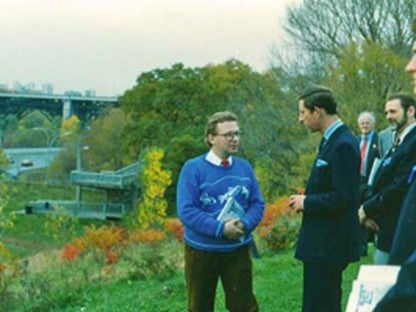
Prince Charles with Mark Wilson, Task Force chair, explaining the ideas for the regeneration of the Don River in 1991.
The Report
In August of 1991, the Task Force released their final report, Bring Back the Don, with a vision for a restored Don River that works with nature, rather than against it. The report galvanized support (including drawing the attention of Prince Charles) for the Don River as a natural space, and ultimately lead to the Don Mouth Naturalization and Port Lands Flood Protection Environmental Assessment and the Port Lands Flood Protection Project currently underway.
Toronto’s citizen advocates have been supporting a vision for a revitalized, accessible Lower Don for 30-plus years. By 2024, that vision will be a reality.
To Learn more visit PortlandsTO.ca.


